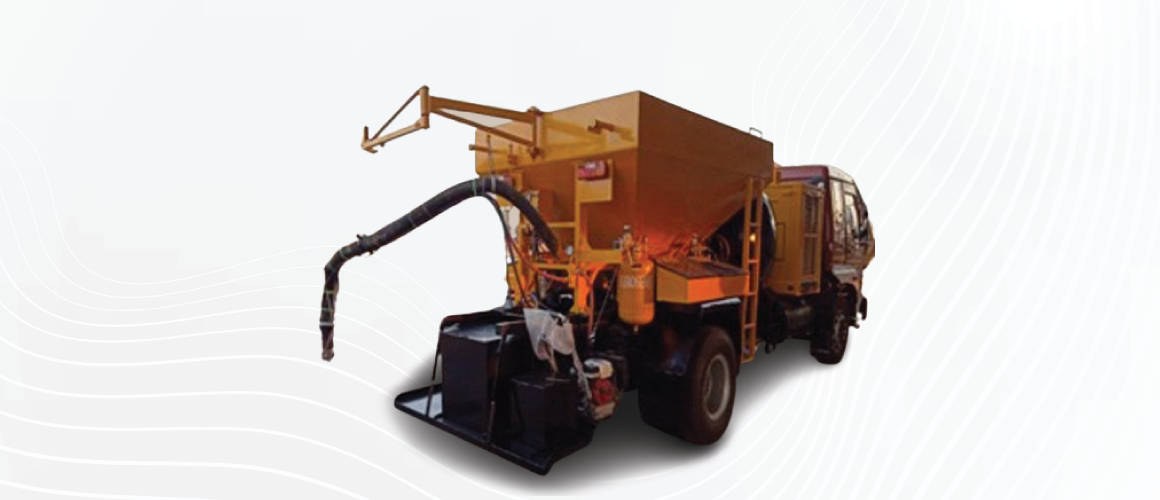Why Are New Airports Using Pothole Patchers to Maintain Outer Approach Roads During Expansion Phases?

Airport expansion projects often span several months, if not years. During this time, construction work extends beyond the main terminal to include surrounding access roads, parking areas, cargo terminals, and service routes. One of the key concerns during this phase is maintaining smooth traffic flow and safe driving conditions for workers, contractors, and the public using these approach roads. With heavy machinery, material transport vehicles, and fluctuating weather conditions putting stress on these surfaces, potholes quickly become a recurring issue.
To address this challenge efficiently, many new airports have started deploying pothole patchers. These machines are specifically designed to carry out quick and durable repairs, even while other infrastructure work is ongoing. Their use ensures the approach roads stay serviceable, safe, and free of hazards, helping construction and logistics continue without unnecessary interruptions.
Why do road conditions matter during airport expansion?
While the focus during an airport project is often on terminals, runways, and buildings, the outer approach roads play a huge role in day-to-day movement. These roads handle everything from material deliveries and construction vehicles to VIP visits and contractor shifts. Any disruption—like a water-filled pothole or broken asphalt—can lead to delays, accidents, or equipment damage.
Since approach roads often serve multiple functions during expansion, they experience much heavier traffic than usual. Frequent turning on large vehicles, uneven loads, and weather exposure all contribute to road surface wear. Repairing these roads manually can be slow and temporary, especially when work has to be redone after every rain or load cycle. This is where pothole patchers provide an edge for faster, more consistent repairs that last longer and support continuous operations.
How do pothole patchers help during expansion phases?
During airport expansion, ground movement doesn’t just happen on the runways. Service roads, access lanes, and utility corridors become the backbone of daily logistics—constantly exposed to construction equipment, delivery trucks, and shuttle vehicles. These roads often face repetitive stress and environmental exposure before permanent surfacing is in place. As surface damage begins to appear, delays in repair can ripple through project timelines and create avoidable safety issues. Quick, effective maintenance is essential to keeping the workflow steady.
Pothole patchers offer a solution that blends speed with durability. These machines are built for on-site flexibility, with features like insulated material hoppers, tack coat applicators, and compaction tools. Their ability to carry out high-quality repairs in short time windows makes them ideal for busy construction sites where access cannot be blocked for long. Whether the damage is shallow cracking or a fully formed pothole, patchers restore road integrity with consistent material application and strong surface bonding.
Contractors gain more control over scheduling with pothole patchers in operation. Repairs can be slotted between equipment shifts or during low-traffic windows without requiring large crews. This makes the process safer, more predictable, and better aligned with ongoing construction targets. Roads that are kept in good condition throughout the expansion phase also support smoother equipment operation, reducing wear on tires, suspensions, and undercarriages.
- Quick repair cycles support continuous site traffic
Pothole patchers can restore damaged surfaces in minutes, reducing disruption to haulage and utility vehicle movement. - Enhanced bonding ensures longer-lasting patches
Heated mix, tack coat application, and compaction systems improve adhesion and reduce recurrence of potholes. - Allows for rolling repairs without shutting down work zones
Many patchers can operate in live environments, fixing defects without halting nearby construction activities. - Minimizes safety hazards for workers and equipment
Smooth, patched roads lower the risk of vehicle damage and reduce trip hazards for onsite personnel. - Reduces long-term maintenance costs during the build phase
Durable repairs lower the frequency of repeat interventions and reduce cumulative spending on access road maintenance. - Supports mixed-weather operations with dual-material capability
With hot and cold patching support, the machines can be deployed year-round regardless of temperature fluctuations. - Improves schedule reliability through consistent road access
Reliable surface conditions ensure materials and machinery reach their destinations on time, preventing costly rescheduling.
Tips for airport contractors using pothole patchers
Airport projects involve layered timelines, simultaneous work zones, and strict coordination between civil, electrical, and operational teams. Amid all this, maintaining access roads can easily fall off the radar—until a damaged surface starts delaying concrete deliveries or grounding service vehicles. Including pothole patching as a proactive, scheduled task instead of a reactive fix can make a noticeable difference.
Contractors who integrate these machines into their daily or weekly workflows find it easier to manage site safety, worker mobility, and logistics flow. It’s not just about fixing visible damage—it’s about reducing stress on machinery, avoiding repeated repairs, and keeping productivity consistent as the project scales. Getting the best out of a pothole patcher depends on how strategically it’s deployed.
- Pick patchers suited for roads with high-frequency and high-axle-load traffic.
- Choose models with insulated hoppers for hot mix applications in cooler regions.
- Schedule repairs early in the day to avoid heat-related material setting issues.
- Use calibrated spray-injection units for deeper cracks and water-damaged patches.
- Ensure operators are trained in patching techniques suitable for semi-rigid surfaces.
- Document patching activity to track durability and optimize repair intervals.
- Store patching material in weather-protected areas to maintain quality.
- Keep the patching unit ready during major equipment movement or material hauling days.
Conclusion
Outer approach roads may not be the headline act in an airport expansion, but they keep everything else moving—literally. By using pothole patchers, airports can ensure these critical surfaces stay operational, safe, and efficient during the busiest construction phases. It’s a practical step that supports smoother logistics, better worker movement, and fewer costly delays.
If you’re managing infrastructure around a growing airport and need reliable pothole patching solutions, get in touch with info@aaspaequipment.com to explore the right machines for your project needs.
